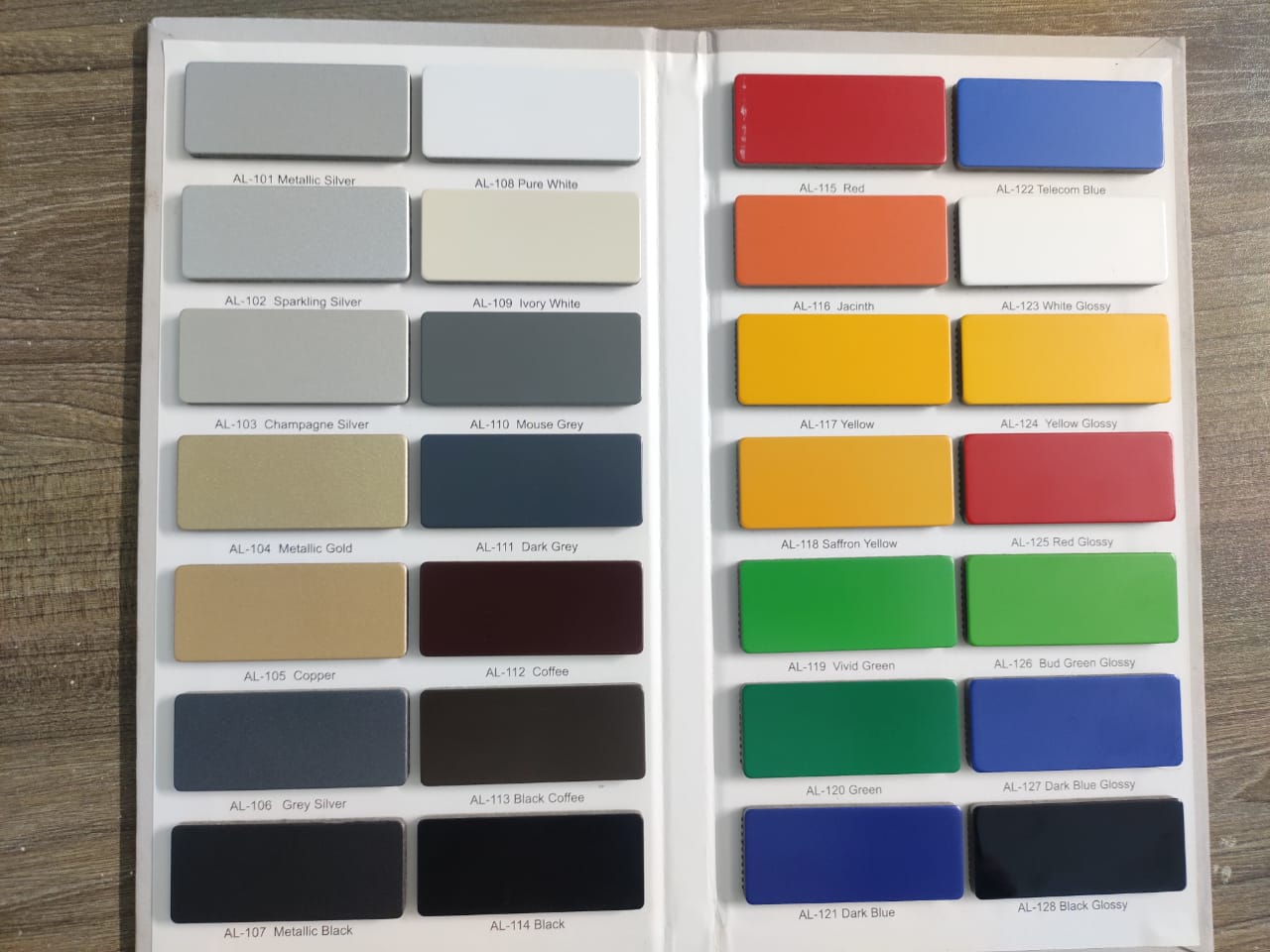Aluminium Composite Panels (ACPs) are a marvel of modern construction and design. Their sleek, lightweight, and durable nature makes them a favorite in architectural cladding, signage, and creative projects. But here’s a common question: Can you paint an Aluminium Composite Panel (ACP)?
The short answer is yes, but it’s not as straightforward as slapping on a coat of paint. It takes some elbow grease, the right materials, and proper technique to ensure a stunning and lasting finish. Let’s dive into the details and learn the how-to and why of painting ACPs.
What is an Aluminium Composite Panel (ACP)?
Before we jump into the paint talk, let’s get acquainted with ACPs.
Definition and Common Applications
An Aluminium Composite Panel is a flat panel consisting of two thin aluminium sheets bonded to a non-aluminium core. This clever construction gives ACPs their lightweight yet sturdy characteristics. They’re widely used for:
- Building facades: Sleek, modern exteriors.
- Signage: Smooth surfaces perfect for advertising.
- Interior design: From furniture to feature walls.
Key Properties
What makes ACPs so popular?
- Lightweight: Easy to handle and install.
- Durable: Resistant to weather, corrosion, and impacts.
- Smooth Finish: Perfect for modern aesthetics.
Why Paint an ACP?
So, why would anyone want to paint an already great material?
1. Enhance Aesthetics
ACPs come pre-finished in various colors, but sometimes, the standard options don’t cut it. A custom paint job allows you to match exact design schemes or trends.
2. Repair and Refresh
Dents, scratches, or faded panels? A fresh coat of paint can breathe new life into your ACPs without replacing them.
3. Creative Customization
Want a metallic sheen? A textured finish? Painting offers endless possibilities for personalization.
Core Question: Can You Paint Aluminium Composite Panels?
Yes, you can paint ACPs—but let’s break it down.
Surface Characteristics
The smooth, often pre-coated surface of ACPs is both a blessing and a curse. While it makes them visually appealing, it also creates challenges for paint adhesion. Most ACPs are coated with a PVDF or polyester layer, which resists paint naturally.
Challenges of Adhesion
Paint doesn’t stick to slick surfaces easily. To ensure a durable finish, you’ll need to prep the surface properly. We’ll discuss this in detail below.
What Types of Paint Can Be Used?
Not all paints are ACP-friendly. Some can crack, peel, or simply refuse to stick. Here are your best options:
1. Polyurethane Paint
Known for its durability and smooth finish, polyurethane paint is a top choice. It’s resistant to UV rays and harsh weather, making it ideal for outdoor applications.
2. Acrylic-Based Paint
Acrylic paints are flexible, quick-drying, and easy to work with. They’re great for DIY projects and provide good adhesion with proper preparation.
3. Epoxy Paint
Epoxy paints are highly durable and resistant to chemicals. They’re an excellent option for ACPs in industrial settings or high-traffic areas.
Preparation Before Painting
You can’t skip prep work when painting ACPs. It’s the foundation for a flawless finish.
1. Cleaning the Surface
Start with a clean slate. Dust, grease, and old coatings can ruin your paint job.
- How to Clean: Use a solution of mild detergent and water. For tougher grime, consider isopropyl alcohol or a commercial degreaser.
- Tools: Soft cloth, sponge, or non-abrasive scrub pad.
- Pro Tip: Rinse thoroughly and let the panel dry completely before moving on.
2. Sanding or Abrasion
Sanding is non-negotiable. It creates a rough surface for the paint to grip onto.
- Why Sand? ACPs are smooth, and paint needs “teeth” to adhere.
- Grit Recommendation: Start with 180-grit sandpaper for a light abrasion. Finish with 220-grit for a smoother surface.
- Method: Use circular motions for even sanding. Wipe down the panel afterward to remove dust.
3. Priming the Panel
Primers are your secret weapon for painting ACPs.
- Purpose: Primers create a bonding layer between the ACP and the paint.
- Best Primers for ACPs:
- Etching primers: Perfect for metallic surfaces.
- Acrylic primers: Compatible with most paints.
- Application: Apply a thin, even coat and let it cure as per the manufacturer’s instructions.
Painting Process
With your surface prepped, it’s time to paint!
1. Choosing the Right Tools
Your tools can make or break your paint job.
- Brushes: Great for small areas but can leave streaks.
- Rollers: Ideal for large, flat surfaces. Use a foam roller for a smoother finish.
- Spray Guns: The best choice for an even, professional look. Requires practice but delivers stellar results.
2. Applying the Paint
Patience is key here.
- First Coat: Apply a thin, even coat. Avoid overloading your brush, roller, or spray gun.
- Drying Time: Let each coat dry completely before adding another. This prevents drips and uneven texture.
- Number of Coats: Typically, 2–3 coats are sufficient for full coverage.
3. Finishing Touches
Seal the deal with a protective layer.
- Protective Sealants: Look for UV-resistant or weatherproof sealants.
- Why Seal? It extends the life of your paint job and keeps it looking fresh.
- Application: Use a clear spray sealant or a brush-on option for the final touch.
Common Challenges and Solutions
Even with perfect prep and technique, issues can arise. Here’s how to tackle them:
1. Paint Peeling or Bubbling
- Cause: Inadequate cleaning or skipping the primer.
- Solution: Sand the area, reapply primer, and repaint.
2. Color Fading Over Time
- Cause: Exposure to sunlight or low-quality paint.
- Solution: Use UV-resistant paints and apply a sealant.
Use Cases and Benefits
Painting ACPs isn’t just functional—it opens up a world of creative possibilities.
Residential Applications
- Personalize facades, gates, or fences.
- Add custom designs to interiors, like feature walls or furniture.
Commercial Uses
- Create branded signage.
- Refresh building exteriors for a polished, professional look.
FAQs
1. Do You Need Special Equipment to Paint ACPs?
Not necessarily. For DIY, basic tools like brushes and rollers work. For a professional finish, consider using a spray gun.
2. Can ACPs Be Painted Over Multiple Times?
Yes! Just ensure you clean, sand, and prime before re-painting. This maintains a durable and smooth finish.
Conclusion
Painting Aluminium Composite Panels is not only possible but can also transform their look and functionality. With the right preparation and materials, you can achieve a durable, stunning finish that meets your aesthetic and practical needs. Remember: prep work is everything. Take your time cleaning, sanding, and priming for a professional result.
Whether you’re revamping a building facade or customizing a sign, a coat of paint can make all the difference. So grab your tools, unleash your creativity, and get painting!


Leave a Reply